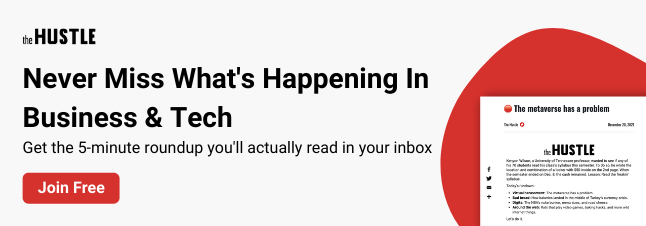When you think of a highly successful individual, your mind might go to a C-suite executive at a large corporation.
While skill plays a role in an executive’s success, many also have an important leg up: an executive assistant.
Executive assistants handle all facets of a leader’s day-to-day life, from scheduling meetings and business trips to planning lunch breaks and wake-up times. This takes many important tasks off an executive’s plate, freeing them up to put their full energy toward their business goals.
But for most of us, we’re left trying to coordinate our own schedules and budget our time more effectively by ourselves.
Luckily, three executive assistants were willing to share their most powerful tools for staying organized, on track, and productive. Here’s how to do it all:
1. Start With Your Calendar
Across the board, the No. 1 key to staying organized for executive assistants is the humble calendar.
Kristina Rogers, an executive assistant to the CEO of a climate tech company, suggests always stacking meetings to make sure you’re not left with small blocks of time in between, which can quickly turn unproductive.
Rogers says her rule of thumb is to not schedule meeting blocks that are longer than two hours, and she aims to have no more than six hours per day of meetings (starting after 10am and ending at 4pm).
In a perfect world, she says, executives get at least 90 minutes of free time per day and one completely meeting-free day per week.
Another tip from Rogers on protecting your time: calendar blocks. She says while some executives resist blocks at first, it's the only way to ensure free time and signal to your colleagues that you’re out of pocket.
“Make sure you’re really intentional about how you spend your time,” says Rogers.
2. Take Assessment of Your Meetings
After your calendar is under control, take a look at the context of your meetings, because they can make or break your productivity.
The key lies in being purposeful about what does and doesn’t go on the calendar. Ashley Langlais, an executive assistant to the CEO and COO of a venture capital firm, says you should take assessment of every meeting invitation and make sure your priorities match the meeting’s priorities.
She says that “high-energy” meetings where you’re driving the agenda or will have important input should be kept, while low-energy meetings or those where you’re unsure of the role you’ll be playing should be deleted.
She also notes that all meetings should always have an agenda — usually created by the organizer — including standing one-on-ones.
Langlais suggests grouping meetings by context to avoid needing to switch between too many topics and to more easily achieve a flow state. “That fragmentation leads to unproductive time,” she says.
If an executive is feeling crunched for time, Langlais conducts quarterly calendar cleanups. She looks retrospectively at their calendar to analyze their meetings and take time back where necessary, whether that’s by decreasing meeting cadence or canceling meetings altogether.
3. Stay Organized
An executive assistant’s ultimate job is to keep the executive they’re supporting organized. This means everything from their calendar to their inbox, making sure nothing falls through the cracks.
To do this, assistants lean heavily on tech. Rogers says she uses a combination of Asana, Slack, Google Drive, Gmail, and Notion.
Rogers’ secret weapon, though, is simple: her email inbox. She uses Gmail’s priority inbox feature so that emails she sends herself, or that her boss has sent her, all get stored in one- easy-to-find folder.
She also uses event reminders both for long- and short-term nudges. For example: When planning an event in September, she will schedule an August reminder about booking travel.
Langlais also uses reminders: She turns to Slack reminders to keep track of her to-dos — as soon as she receives a request from an exec, she’ll jot down a reminder to herself to send at a later time.
And, to start each day off strong, Rogers sends her executives their agenda every morning so they can more clearly prioritize their tasks and prepare for meetings. She says the practice can be extremely helpful for anyone:
“You can take a screenshot of your agenda the night before and schedule it in Slack to send to yourself in the morning. It will set you up for success and kind of feels like you have your own assistant,” she says.
4. Know Your Needs
Dahlia Welsh, an executive assistant working in the tech industry, says that the most important step to maximizing productivity is to be honest with yourself and be in touch with your strengths, weaknesses, and needs.
“You need to know yourself and know what you need and stick to it,” she says.
This comes into play when trying to plan and coordinate a hectic work schedule: Welsh says execs need to be introspective when it comes to what time they want to start in the mornings, when they need to leave the office at night, and which projects and tasks they’re willing to delegate.
Rogers and Langlais caution against scheduling meetings during the times of day when you’re most productive. Save those moments for deep work, and schedule lower-priority tasks and meetings during the times when you’re not mentally at your peak.
5. Find Your Balance
Even the most productive, powerful executives have personal needs and lives that they need to balance with their careers.
“In a remote world, work does seep into everything,” says Rogers. “It’s up to you to set boundaries on how much of it you let come into your life. For an executive who’s the founder of a company, this is his life. So it’s hard to not think about work after 6pm.”
To maintain work-life balance, executive assistants recommend using the calendar techniques to protect what’s important to you, whether it’s a morning workout or making it to a child’s sports game in the evening.
Rogers says all the executives she’s supported have taken care of themselves physically and emotionally, with life coaches and therapists in addition to regular exercise and personal time.
Welsh says execs with a healthy work-life balance are better leaders to their teams and show employees through actions that it’s important to take time for themselves. Plus, the grind never stops, so all you control is your own actions.
“The inbox is always full,” says Welsh. “If you wait for the inbox to be empty, you’ll never leave work.”






![7 Habits of Highly Effective People [Summary & Takeaways]](https://www.hubspot.com/hubfs/7-habits.jpg)








